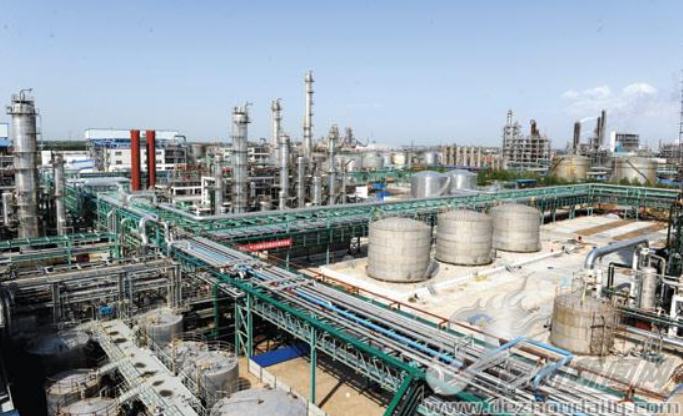Constructing an ethylene glycol plant efficiently requires a deep understanding of the required processes, from engineering and design to construction and startup. Ethylene glycol, a crucial chemical compound used in antifreeze, polyester fibers, and various industrial applications, is produced through a series of intricate steps that demand precision and advanced technology. This guide outlines the process of constructing an ethylene glycol plant quickly while maintaining safety, quality, and cost-effectiveness.
Planning and Design Phase for Ethylene Glycol Production
1. Feasibility Study and Site Selection
The first step in constructing an ethylene glycol plant is conducting a feasibility study. This involves evaluating the economic viability of the project, understanding market demand, and identifying key operational requirements. During this phase, it’s essential to select an appropriate site that offers proximity to raw materials, logistical ease, and compliance with environmental regulations. Factors such as water availability, power supply, and access to skilled labor should also be considered.
The site selection process should focus on minimizing transportation costs for ethylene feedstock and glycol products. Ensuring proper zoning and meeting local regulations is critical for avoiding delays during construction.
2. Engineering and Process Design
Once the feasibility study is complete and the site is selected, the next step is engineering design. The plant design includes detailed specifications for equipment, layout, piping systems, and safety measures. It’s crucial to ensure the design adheres to international standards and incorporates state-of-the-art technology to maximize efficiency and minimize operational costs.
Key aspects of ethylene glycol plant engineering include:
- Process flow diagrams (PFD) that map out the chemical reactions, heat exchangers, and separation units required.
- Piping and instrumentation diagrams (P&ID) for designing the flow of materials.
- Equipment specifications, including reactors, distillation columns, and storage tanks.
Effective process design is vital for optimizing energy consumption and maximizing the yield of ethylene glycol, which ensures a competitive edge in the market.

Key Equipment for Ethylene Glycol Production
3. Reactor Systems
Ethylene glycol is primarily produced through the oxidation of ethylene to produce ethylene oxide, which is then hydrated to form glycol. The reactor systems used in the plant include multi-phase reactors and catalytic reactors. These reactors are designed to handle the high temperatures and pressures required for the reaction.
The choice of reactor depends on the specific production technology being used, such as the ethylene oxide (EO) to ethylene glycol (EG) process or the ethylene oxide (EO) hydrolysis process. Proper reactor design ensures high conversion rates and minimizes by-product formation, which can affect the final product's quality.
4. Distillation Columns
Following the reaction phase, distillation columns are employed to separate ethylene glycol from unreacted ethylene oxide, water, and other by-products. These columns utilize heat and pressure differences to distill the components based on their boiling points.
To ensure high efficiency, these distillation columns should be designed with multiple trays or packed sections to optimize separation. Advanced distillation technologies can improve energy efficiency, which is crucial for reducing operational costs.
5. Heat Exchangers
Heat exchangers play a crucial role in ethylene glycol production by recovering and reusing heat throughout the process. By transferring heat from one stream to another, heat exchangers reduce the overall energy consumption of the plant, making the process more cost-effective and sustainable.
Designing heat exchangers that minimize heat loss while maximizing energy recovery ensures that the ethylene glycol plant remains efficient and profitable over time.
Construction Phase for Ethylene Glycol Plants
6. Civil Engineering and Foundation Work
The construction phase of an ethylene glycol plant starts with civil engineering and the preparation of the foundation. This includes excavation, laying concrete foundations, and ensuring that the infrastructure can support the weight and vibrations of the equipment. It’s critical to factor in seismic activity and soil conditions to avoid any structural failures during plant operations.
In addition, the design should include proper drainage systems, which are essential for managing waste materials and avoiding environmental contamination.
7. Equipment Installation and Piping
Once the foundations are laid, the equipment installation phase begins. This involves placing reactors, distillation columns, heat exchangers, and other critical units in position according to the plant’s layout design. Precision during installation ensures optimal operation once the plant is live.
After the major equipment is installed, the piping system must be carefully designed and integrated. This includes connecting the reactors, heat exchangers, distillation columns, and storage tanks to facilitate the smooth flow of materials.
8. Electrical and Control Systems Setup
Another key aspect of the construction process is the installation of electrical systems and control systems. Ethylene glycol plants use automated control systems to monitor and adjust temperature, pressure, and chemical reactions in real-time. This ensures that the production process runs smoothly and meets quality standards.
Control systems also monitor safety parameters, such as high-pressure limits or equipment malfunctions, to protect both workers and the plant infrastructure. The system must be tested rigorously to ensure all alarms and safety protocols function properly.
Start-Up Phase for Ethylene Glycol Plant
9. Commissioning and Testing
Once construction is complete, the plant enters the commissioning phase, where the systems are tested to ensure they operate according to design specifications. This includes performance testing of reactors, distillation columns, and heat exchangers. During this phase, it is crucial to verify that the plant can handle the required throughput and that the quality of ethylene glycol meets industry standards.
Testing should be done under various operational conditions, including startup, steady-state operation, and shutdown, to ensure all systems function efficiently and safely.
10. Staff Training and Operations Manual
An often overlooked but essential part of the start-up phase is staff training. Operators, maintenance personnel, and engineers should be well-versed in the operation of the plant, including safety protocols, equipment handling, and emergency procedures.
Creating a detailed operations manual that outlines the plant’s processes, safety measures, and maintenance schedules is critical for the long-term success of the plant. This guide ensures that everyone involved is prepared to handle any situation, from routine operations to unexpected challenges.
Maintaining Efficiency and Safety in the Ethylene Glycol Plant
11. Regular Maintenance and Upgrades
After the plant is up and running, it’s essential to maintain equipment and optimize plant performance continuously. Regular maintenance, including inspection of reactors, distillation columns, and heat exchangers, ensures that the plant operates at peak efficiency and minimizes downtime. Additionally, periodic upgrades to equipment and systems can enhance performance and keep the plant competitive.
12. Safety Protocols and Environmental Considerations
Lastly, safety and environmental responsibility must be prioritized throughout the operation of the plant. Ethylene glycol production involves handling hazardous chemicals, and proper safety protocols are necessary to protect workers and the surrounding community.
Environmental management is also crucial, especially concerning waste disposal and emissions. Implementing green technologies and complying with environmental regulations ensures that the plant minimizes its environmental footprint and operates sustainably.
Conclusion
Constructing an ethylene glycol plant quickly and efficiently requires careful planning, precision engineering, and strict adherence to safety and environmental standards. By following these guidelines and employing advanced technologies, companies can ensure that their ethylene glycol production plants are both cost-effective and capable of meeting the ever-growing demand for this essential chemical.
















